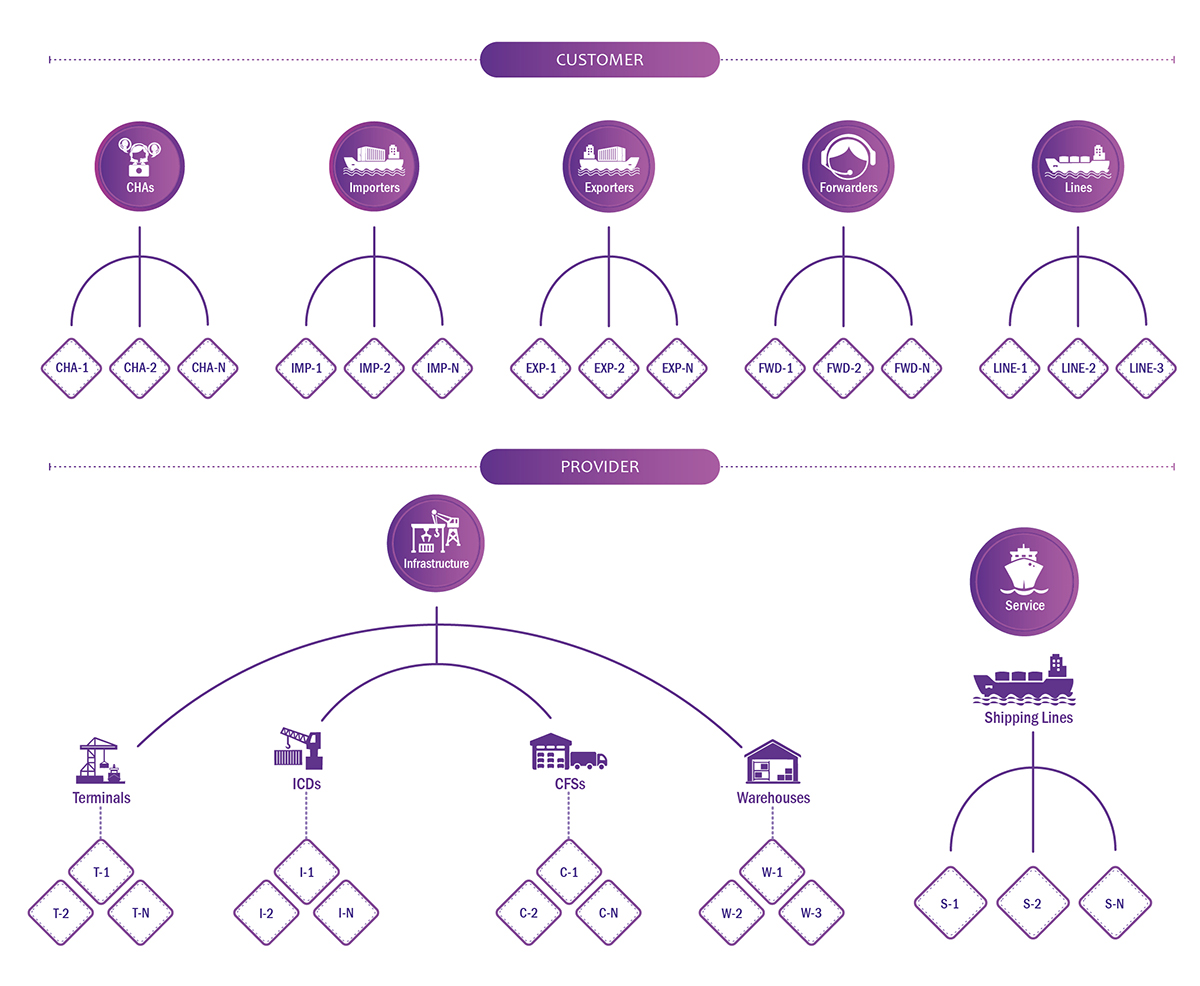Portall is a Subscription based Value Added Service for the customers of CFS, Terminal & ICD. It’s a one stop consolidated dashboard solution for customers. Portall is using enterprise service bus (ESB), a middleware software architecture that provides fundamental services to communicate with more complex architectures of stake holder’s systems. It acts as the communication centre in a service-oriented architecture (SOA). It translates requests into the appropriate message types and routes them to the appropriate service provider. Being loosely coupled, if anything changes in one system, the other systems are not affected other than minor adjustments in the ESB. It enables to Integrate other IT environments in a faster and more secured way by converting and transforming between different protocols and data formats.
- THE PRIMARY FUNCTIONALITIES OF AN ESB ARE WHY USE AN ESB IN PORTALL
- Monitor and control routing of message exchange between services.
- Resolve contention between communicating service components.
- Control deployment and versioning of services.
- Cater for commodity services like event handling, data transformation and mapping, message and event queuing and sequencing, security or exception handling, protocol conversion and enforcing proper quality of communication service.
WHY USE AN ESB IN PORTALL
ESB makes it easy to change or add components in the back end for different stake holder’s systems of Portall. It provides a convenient place to enforce security and compliance, logging and monitoring the services activated on Portall. It can provide load balancing to improve performance of Portall mobile and web Application. It also provides fail over support in case of a component or resource failure of different systems attached to the Portall application.

DATA SECURITY IN ESB
Portall as an application is agnostic to the other system functionalities (Ex. Line System, CFS systems etc). The Communication (Data/ Messages) takes place through ESB. Data / messages are passed on to the end users as and when it is received and does not store it. However, ESB maintains the log of the activities performed. Data is transported over secure socket layer (SSL).
- DATA SECURITY IN ESB
- Scales from point-solutions to enterprise-wide deployment (distributed bus).
- More configuration rather than integration coding.
- Central rules-engine, central broker.
- Easy plug-in and plug-out and couple systems loosely Incremental patching with zero down-time; enterprise becomes "refactorable".